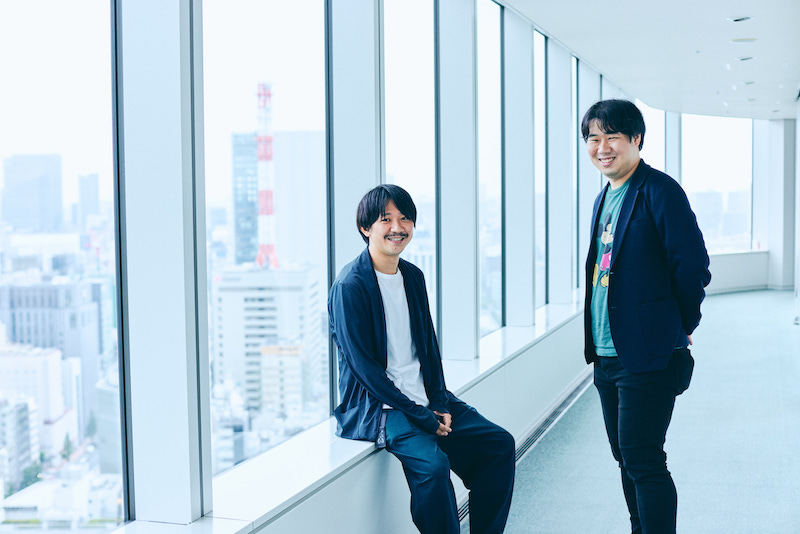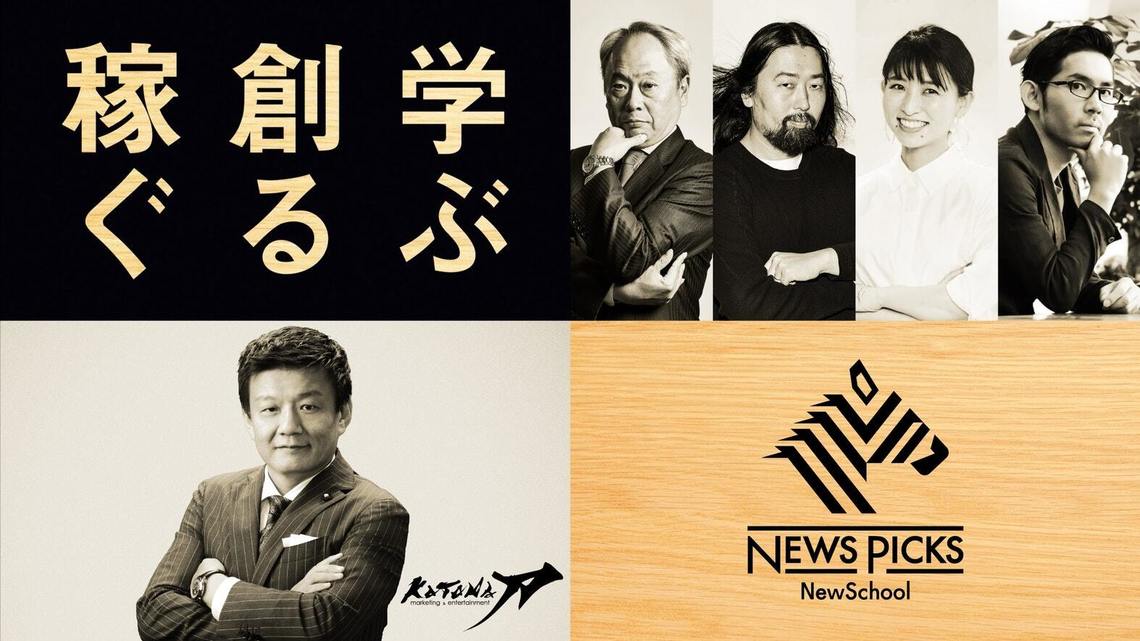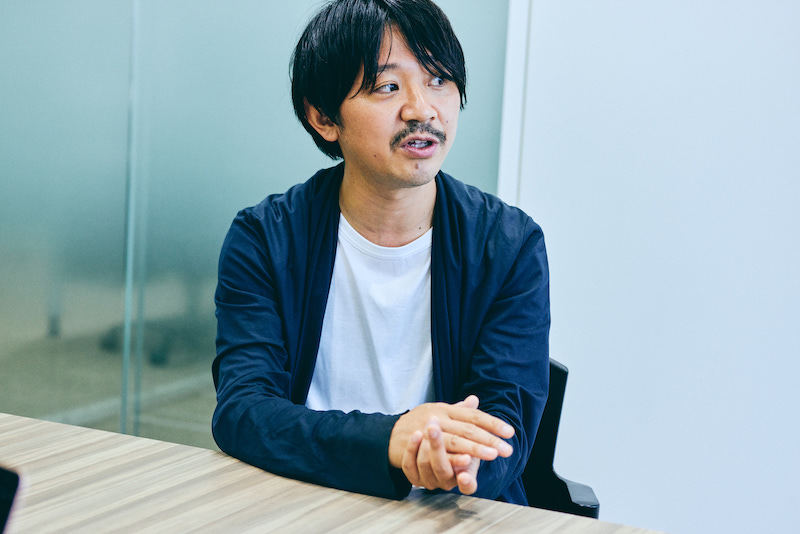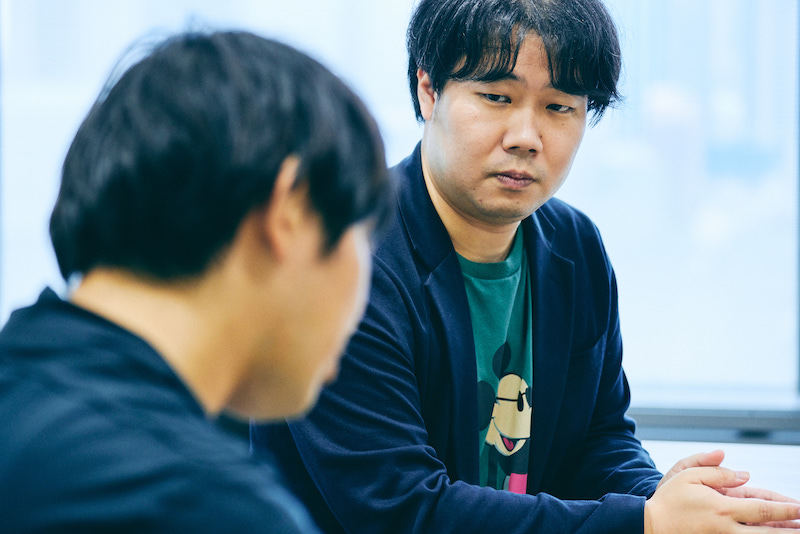In recent years, community-based businesses have been gaining attention.
However, the environment surrounding communities has drastically changed due to the COVID-19 pandemic. Many companies were forced to shift online and inevitably reduce the weight of real-world interactions. What difficulties and changes did this entail, and how have communities connecting companies and customers evolved in this era of social distancing?
This time, we held a discussion with Hiroshi Ueda, who launched NewsPicks NewSchool—a learning × community initiative born from lessons learned during the pandemic—and Yuichiro Kojima of Dentsu Inc.'s Youth Research Department.
We asked Mr. Ueda about the changes and outlook for business and community, and Mr. Kojima about shifts in community dynamics and values among younger generations.

From left: Yuichiro Kojima, Yutaka Ueda
Communities are shifting to "What you want to do comes first"
──It feels like the value of "community" in business has only grown stronger after the pandemic.
Kojima: I believe the community perspective has become indispensable in marketing.
When discussing the rise of community marketing, there are two interesting surveys targeting younger generations: "Do you consider yourself an otaku?" and "How many communities do you belong to?"
Longitudinal data shows both are increasing, with the former exceeding half. Being an otaku essentially means having your own community rooted in passion. The average number of communities people belong to has grown from three at the start of the survey to a maximum of seven.
Ueda: So for the younger generation, participating in some kind of community has become the norm.
Kojima: Yes. Previously, people belonged to a few communities extending from their daily lives, like friends from clubs or part-time jobs. Now, they connect through online communities centered around games or favorite idols.
Against this backdrop, the idea gained traction that when considering marketing, it's better to think in terms of communities rather than generational theory or demographics.
This shift happened roughly five years ago.
Ueda: Five years ago coincides with the rise of online salons, doesn't it?
Kojima: Exactly. It was a trend where people seeking a third place started creating communities themselves, while simultaneously, companies emerged that developed community building as a business.
I believe NewsPicks is one such company leveraging community for business. What value have you personally felt from operating it?
Ueda: I believe the value of a community exists for both participants and operators.
For participants, it offers self-fulfillment and serves as a third place. For operators, it provides a way to hear customer feedback and improve services.
Since communities also function as "collections of fans," interactions can feel less like promotion. From an operational standpoint, I'm always grateful to receive feedback about our product at a comfortable distance.
I also feel that unexpected outputs emerging is one of the strengths of communities.
To give a concrete example, the 'Content Production' course taught by Norihiko Sasaki at NewsPicks NewSchool(*) led to a connection with Roland, who hosts the regular NewsPicks program ("New Door").

※ = A practical school launched by NewsPicks with the theme "Learn, Create, Earn," which saw a total of 2,300 participants over approximately one and a half years.
'Content Production' was a course that taught content creation know-how while actually executing projects from planning to production.
During the course, a proposal was made to feature Roland as a participant. Coincidentally, one of the students had an indirect connection to Roland, which made his assignment possible.
https://newspicks.com/news/5291666
It was a moment that showed real potential—moving beyond just providing information and platforms to actually creating content born from the community itself.
──Since COVID, much communication has shifted online. How has the nature of communities changed?
Kojima: From the perspective of youth studies, first, many "communities that naturally formed as gathering places" were lost.
Traditional communities emerged from places like university students heading to club meetings during breaks between classes, or hangouts where they knew they'd find familiar faces.
NewsPicks' beginnings were similar, right?
Ueda: That's right. NewsPicks' community also started as something organic.
For NewsPicks, the first community was the "comment section." People interested in news from various fields gathered to comment. We called that space, where everyone learned from the text-based information, a community.
Kojima: So you expanded the business starting from the comment section community.
Ueda: Yes. It branched out into multiple communities, but I completely understand how those circle-like gathering spots naturally formed at the beginning.
Kojima: Those gathering places are disappearing now.
Especially for younger generations, they've effectively lost default communities like school and clubs through their shift online. Naturally, derivative communities like clubs also vanished, so the sense of loss is immense.
Additionally, we've observed a recent shift in community dynamics: moving from "friends first" to "activities first."
This isn't so much due to the pandemic's impact as it is something recent youth studies have revealed. Previously, it was "friends first, activities second" – you had your friends, your regular group would gather and decide "What should we do today?" and then go shopping or to karaoke.
Now it's more like, "We're going bowling. Anyone free?" People gather around the activity itself, recruiting others based on what they want to do. The relationship between friends and activities has flipped.
What You Can Do to Create "Psychological Safety" Online
──How has the shift to online communities changed things for business professionals?
Ueda: From a "community building" perspective, I believe both online and offline have their distinct advantages.
Speaking from my experience at NewSchool, I think the diversity that emerged among participants is a positive change brought by the shift online.
For example, people living in rural areas or stay-at-home moms with young children—those who couldn't participate before due to time or location constraints—joined us.
Online, they no longer need to spend hours commuting. They can attend lectures while doing household chores or engage in discussions during spare moments.
──What were some of the challenges in transitioning online?
Ueda: NewSchool originally started as an offline learning community, renting space at Ginza's Tokyu Plaza.
Therefore, when the COVID-19 shock hit right after launch and we had to switch most courses online, it was a very difficult decision.
However, once we started running courses online, the transition itself went smoothly since tools like Zoom were readily available.
What I remember most vividly is how incredibly difficult it was to build the foundational "psychological safety" needed to generate the energy for collaborative learning centered online and increase communication among participants.
Kojima: One advantage of offline settings is that they foster semi-compulsory communication.
Online, it's often enough to just have Zoom open with your microphone muted or camera off. Offline, though, there are situations where staying silent feels uncomfortable, where you're almost forced to speak up. That's what created those spontaneous interactions and encounters.
I believe that kind of "semi-compulsory communication" was necessary to enhance the psychological safety of the community.
Ueda: At NewSchool, we were very conscious of the value of "semi-compulsory communication." Even for online courses, we tried to include offline meetups on the first day whenever possible.
Meeting in person on the first day, seeing each other's faces, and having conversations creates that sense of "Oh, it's them" even online, which builds psychological safety.
We also held the final day offline to share a sense of accomplishment and build relationships for the future.
While online has lower costs and greater efficiency, we strategically used offline events at key points to build a strong community.
Mixing communities of coffee lovers and camera enthusiasts
──What should companies be mindful of when implementing community-based initiatives going forward?
Kojima: Many companies aren't aware of the communities they already have, so I think the first step is recognizing that.
Take TV shows, for example. They air at the same time every week, right? If you create a place where people gathering at that time can communicate, I think it will quickly start functioning as a community.
Book club communities are popular now, but publishers could step up and take a more active role in running them. I think companies with content still have plenty of room to develop communities.
Ueda: This might not be limited to communities, but I also feel it's important to establish a clear purpose.
Late last year, NewsPicks launched "NewsPicks for WE," a community empowering working women. By clearly segmenting the audience and communicating the core "why" behind the community's necessity, we started receiving numerous inquiries from companies wanting to partner with the community.
For WE, we carefully communicated through press releases and articles that we built the community with IBM Japan, which has extensive experience in women's advancement, to achieve the Keidanren-proposed goal of "30% female representation on corporate boards by 2030."
Once the flag is planted, various collaborations emerge, and things start moving continuously.
I believe this approach is adaptable not only to women's empowerment but also to various segments like youth or regional communities.
──For example, if you were to build a community now, what approach would you choose?
Kojima: I think it would be interesting to create a community by connecting "actually compatible elements from different genres."
Every product or content has a target persona it aims to reach, right? The idea is to gather products with similar personas and build a community around them.
Someone from a dating app company mentioned that analyzing user data revealed trends like "People who like A.P.C. tend to use Aesop" or "Cafe lovers are often camera enthusiasts."
Conversely, that suggests there's value in reaching people who "like APC but haven't tried Aesop yet."
Ueda: I completely agree. It would be great if media or communities could play a role in connecting products and content that share the same persona. I believe NewsPicks is a media platform with particularly strong ties to its community, so I'd like to create such examples.
This July, our office relocated to Marunouchi and got a fresh new look. As NewsPicks Studios, we're eager to bring back studio audience viewings.
By interacting with those who visit our new studio for these viewings, we hope to explore the future potential of our community together with everyone.











